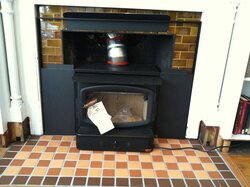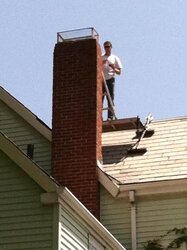First time poster here. I am looking into getting an insert (possible Avalon Pendleton -- so far it's the only model I've found that will fit my tiny 13" deep 24" wide fireplace) and am just starting to learn about the flue connection options and issues.
I have an existing insulated steel chimney liner that was installed about ten years ago (cost $1600), but it only runs to the top of the smoke chamber. I have received contradictory advice from the two places where I'm shopping for inserts. One says I should get a good draft with a direct connection since the majority of the chimney is lined. The other wants me to remove the existing lining and replace it with a longer one to reach the stove. (I asked about possibly extending the existing liner but he said it has to be fabricated in one continuous piece and can't just be joined together like heating duct. Can anyone confirm whether this is really true?).
I also asked about the cleaning issues with a direct connection, and he said that the stove needs to be moved out no matter what, because chimney cleaners in our area (Boston) no longer go up on the roof to clean from above like they used to, but only clean from below now.
Anyway, given the very high cost of replacing the liner, my thought was to just go with the direct connection and see how well it works, rather than pay a lot of money up front to replace the liner to solve a problem that may or may not exist. Does that seem like a reasonable approach?
Thanks for any advice,
Jon
I have an existing insulated steel chimney liner that was installed about ten years ago (cost $1600), but it only runs to the top of the smoke chamber. I have received contradictory advice from the two places where I'm shopping for inserts. One says I should get a good draft with a direct connection since the majority of the chimney is lined. The other wants me to remove the existing lining and replace it with a longer one to reach the stove. (I asked about possibly extending the existing liner but he said it has to be fabricated in one continuous piece and can't just be joined together like heating duct. Can anyone confirm whether this is really true?).
I also asked about the cleaning issues with a direct connection, and he said that the stove needs to be moved out no matter what, because chimney cleaners in our area (Boston) no longer go up on the roof to clean from above like they used to, but only clean from below now.
Anyway, given the very high cost of replacing the liner, my thought was to just go with the direct connection and see how well it works, rather than pay a lot of money up front to replace the liner to solve a problem that may or may not exist. Does that seem like a reasonable approach?
Thanks for any advice,
Jon





